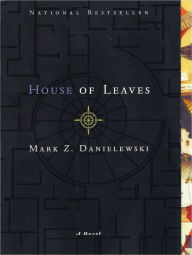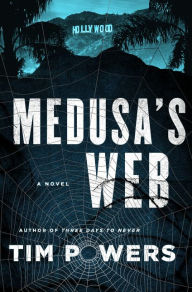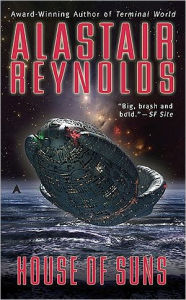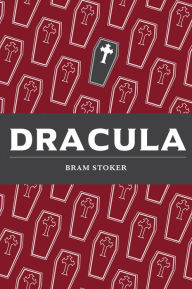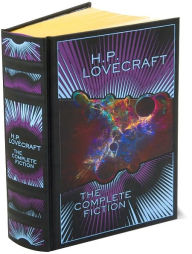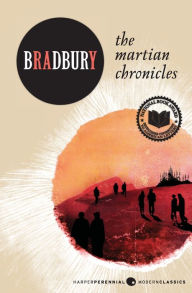7 Disturbing SF/F Houses That Are No Place Like Home
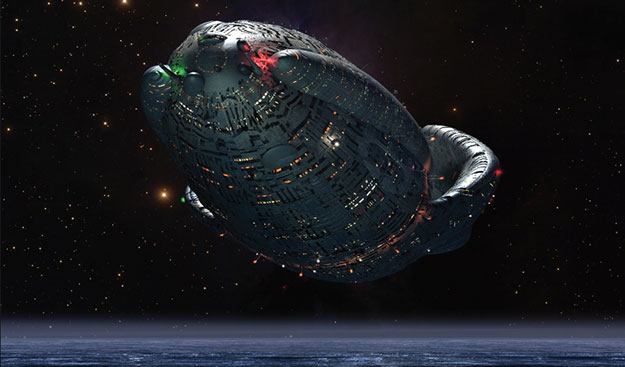 As anyone who suffers from insomnia knows, sometimes the scariest place in the universe is your own house. Even scarier? Other people’s houses, what with their questionable interior decoration decisions, pictures of people you don’t recognize, and the occasional portal to another dimension waiting to be stumbled upon in the upstairs hall. (Or the basement, though why in the world you’re going into someone else’s basement is beyond me.)
As anyone who suffers from insomnia knows, sometimes the scariest place in the universe is your own house. Even scarier? Other people’s houses, what with their questionable interior decoration decisions, pictures of people you don’t recognize, and the occasional portal to another dimension waiting to be stumbled upon in the upstairs hall. (Or the basement, though why in the world you’re going into someone else’s basement is beyond me.)
Writers of speculative fiction know how powerfully disturbing a strange house can be, and often work that trope hard—and not just in horror novels. In fact, sci-fi and fantasy have cashed in on the disturbing house trend pretty often. Here are six of the weirdest, darkest houses in SF/F.
House of Leaves: The Remastered Full-Color Edition
House of Leaves: The Remastered Full-Color Edition
In Stock Online
Paperback
$26.10
$29.00
The House in House of Leaves, by Mark Z. Danielewski
Any discussion of creepy, disturbing, or outright murderous houses in SF/F must begin with Danielewski’s titular creation, a house that is larger on the inside than it should be, a house that is much more than a house. What precisely that “much more” translates to remains open to debate, as the author avoids offering explanations, seeding his complex narrative with typographical tricks, layered codes and riddles, and a heady dose of doubt in your own reading comprehension. What is clear is that no one who enters the House leaves without experiencing something dreadful—and that dread has a tendency to follow them forever after. By the time you reach the point where one of the protagonists is burning the very book you’re reading for light while trapped in the darkest and most inaccessible areas of the “house,” it’s probably already too late for you, too.
The House in House of Leaves, by Mark Z. Danielewski
Any discussion of creepy, disturbing, or outright murderous houses in SF/F must begin with Danielewski’s titular creation, a house that is larger on the inside than it should be, a house that is much more than a house. What precisely that “much more” translates to remains open to debate, as the author avoids offering explanations, seeding his complex narrative with typographical tricks, layered codes and riddles, and a heady dose of doubt in your own reading comprehension. What is clear is that no one who enters the House leaves without experiencing something dreadful—and that dread has a tendency to follow them forever after. By the time you reach the point where one of the protagonists is burning the very book you’re reading for light while trapped in the darkest and most inaccessible areas of the “house,” it’s probably already too late for you, too.
Medusa's Web: A Novel
Medusa's Web: A Novel
By Tim Powers
Hardcover $26.99
Caveat in Medusa’s Web, by Tim Powers
Powers’ crazy, dark thrill ride of a novel sees siblings Scott and Madeline called back to their childhood home, the Hollywood mansion Caveat, after their Aunt’s suicide. Occupied by their decidedly strange cousins, the rambling home holds many secrets—including one involving time travel—but even without the SF-nal aspects, it would still rank as downright spooktastic: decorated with bits and pieces salvaged from old hotels and movie sets, the gloomy home begins to exert a psychological hold on Madeline, much to her brother’s alarm. As long-dead silent film stars start showing up and Scott begins to learn more about his family’s secrets, not to mention the eight pieces of spider-like abstract art that allow for a bit of constrained time travel, Caveat only gets creepier and more claustrophobic.
Caveat in Medusa’s Web, by Tim Powers
Powers’ crazy, dark thrill ride of a novel sees siblings Scott and Madeline called back to their childhood home, the Hollywood mansion Caveat, after their Aunt’s suicide. Occupied by their decidedly strange cousins, the rambling home holds many secrets—including one involving time travel—but even without the SF-nal aspects, it would still rank as downright spooktastic: decorated with bits and pieces salvaged from old hotels and movie sets, the gloomy home begins to exert a psychological hold on Madeline, much to her brother’s alarm. As long-dead silent film stars start showing up and Scott begins to learn more about his family’s secrets, not to mention the eight pieces of spider-like abstract art that allow for a bit of constrained time travel, Caveat only gets creepier and more claustrophobic.
House of Suns
House of Suns
Paperback
$8.41
$8.99
The Gentian House in House of Suns, by Alastair Reynolds
You’ve likely heard whispers about the Winchester Mystery House, the estate of Sarah Winchester, heiress to the fortune of the rifle company that bears her family name; supposedly, construction proceeded constantly (and haphazardly) on the sprawling mansion for nearly four decades, spurred on by the mad woman’s belief that she needed to build a maze-like structure to house the ghosts of all who had been killed by Winchester firearms. Reynolds transposes the legend into a sci-fi context with the Gentian manor, birthplace of the Gentian line of “shatterlings,” 999 clones of a woman named Abigail that traverse the galaxy across centuries at sublight speeds, watching as civilizations rise and fall around them. Though the majority of the story takes place some six million years in the future, the key to solving the mystery at its center lies in the relatively near 31st century, somewhere within the impossibly branching, dead-ending corridors of a home built into an asteroid, where the original Abigail Gentian resides with a mother she has never met in person; long driven mad by guilt over actions performed by her weapons of war, Abigail’s mother has entombed herself within the ever-changing structure, hiding from her own guilt, and a madness that will chase her line across stars and centuries.
The Gentian House in House of Suns, by Alastair Reynolds
You’ve likely heard whispers about the Winchester Mystery House, the estate of Sarah Winchester, heiress to the fortune of the rifle company that bears her family name; supposedly, construction proceeded constantly (and haphazardly) on the sprawling mansion for nearly four decades, spurred on by the mad woman’s belief that she needed to build a maze-like structure to house the ghosts of all who had been killed by Winchester firearms. Reynolds transposes the legend into a sci-fi context with the Gentian manor, birthplace of the Gentian line of “shatterlings,” 999 clones of a woman named Abigail that traverse the galaxy across centuries at sublight speeds, watching as civilizations rise and fall around them. Though the majority of the story takes place some six million years in the future, the key to solving the mystery at its center lies in the relatively near 31st century, somewhere within the impossibly branching, dead-ending corridors of a home built into an asteroid, where the original Abigail Gentian resides with a mother she has never met in person; long driven mad by guilt over actions performed by her weapons of war, Abigail’s mother has entombed herself within the ever-changing structure, hiding from her own guilt, and a madness that will chase her line across stars and centuries.
Dracula (NOOK Edition)
Dracula (NOOK Edition)
By Bram Stoker
In Stock Online
eBook $0.00
Carfax in Dracula, by Bram Stoker
Any house that serves as the living (er, un-living) space of Dracula, the original decrepit gentleman vampire, is pretty creepy by default. Carfax is actually just an old, spacious home in the original novel—the sort of throwback abode an ancient soul like Dracula would love. But when you move fifty coffins filled with dirt from your hometown into the basement under the house’s chapel, and then that basement is overrun with rats as vampire-hunters arrive to investigate, suddenly the resale value plummets and writing the real estate description gets a bit trickier. Carfax itself may not be particularly eldritch, but once a vampire has lived next door, the only thing left to do is burn down the house, burn down your house, and move far, far away.
Carfax in Dracula, by Bram Stoker
Any house that serves as the living (er, un-living) space of Dracula, the original decrepit gentleman vampire, is pretty creepy by default. Carfax is actually just an old, spacious home in the original novel—the sort of throwback abode an ancient soul like Dracula would love. But when you move fifty coffins filled with dirt from your hometown into the basement under the house’s chapel, and then that basement is overrun with rats as vampire-hunters arrive to investigate, suddenly the resale value plummets and writing the real estate description gets a bit trickier. Carfax itself may not be particularly eldritch, but once a vampire has lived next door, the only thing left to do is burn down the house, burn down your house, and move far, far away.
H.P. Lovecraft: The Complete Fiction (Barnes & Noble Collectible Editions)
H.P. Lovecraft: The Complete Fiction (Barnes & Noble Collectible Editions)
By
H. P. Lovecraft
Introduction
S. T. Joshi
In Stock Online
Hardcover
$27.00
$30.00
“The Shunned House,” by H.P. Lovecraft
Certainly no one manufactures the creepy and disturbing quite like Lovecraft, who, for all his many flaws, was a master at hinting at unspeakable horrors existing just off the page. Written in 1924, “The Shunned House” describes a home (based on a real house that’s still standing) where occupants regularly become ill, die mysteriously, or outright disappear. The protagonist and his uncle investigate, camping out in the basement with weapons in an effort to solve the mystery, and after a harrowing night that sees his uncle die horribly, the protagonist returns with barrels of acid and begins to dig into the basement floor. What he discovers there remains shocking to this day—and solidifies the Shunned House one of the most skin-crawling places ever imagined.
“The Shunned House,” by H.P. Lovecraft
Certainly no one manufactures the creepy and disturbing quite like Lovecraft, who, for all his many flaws, was a master at hinting at unspeakable horrors existing just off the page. Written in 1924, “The Shunned House” describes a home (based on a real house that’s still standing) where occupants regularly become ill, die mysteriously, or outright disappear. The protagonist and his uncle investigate, camping out in the basement with weapons in an effort to solve the mystery, and after a harrowing night that sees his uncle die horribly, the protagonist returns with barrels of acid and begins to dig into the basement floor. What he discovers there remains shocking to this day—and solidifies the Shunned House one of the most skin-crawling places ever imagined.
The Blade Itself (First Law Trilogy #1)
The Blade Itself (First Law Trilogy #1)
In Stock Online
Paperback $19.99
The House of the Maker in The First Law trilogy, by Joe Abercrombie
There are many reasons to recommend Abercrombie’s First Law series as standout examples of modern epic fantasy—but if you’re looking for creepy houses, it’s also where you’ll find the House of the Maker, a monolithic structure in the center of the city of Adua (and, supposedly, at the exact center of the world). The House was built by The Master Maker, Kanedias, and remains unoccupied long after his death. Enchanted to instill crippling dread in anyone who approaches, the House is windowless, immensely tall, and constructed using impossible geometry that unsettles, confuses, and warps time and perception. In other words: not a place you want to entertain friends and neighbors, unless you’re aiming to drive them insane.
The House of the Maker in The First Law trilogy, by Joe Abercrombie
There are many reasons to recommend Abercrombie’s First Law series as standout examples of modern epic fantasy—but if you’re looking for creepy houses, it’s also where you’ll find the House of the Maker, a monolithic structure in the center of the city of Adua (and, supposedly, at the exact center of the world). The House was built by The Master Maker, Kanedias, and remains unoccupied long after his death. Enchanted to instill crippling dread in anyone who approaches, the House is windowless, immensely tall, and constructed using impossible geometry that unsettles, confuses, and warps time and perception. In other words: not a place you want to entertain friends and neighbors, unless you’re aiming to drive them insane.
The Martian Chronicles
The Martian Chronicles
By Ray Bradbury
In Stock Online
Paperback
$16.49
$18.99
The automated house in “There Will Come Soft Rains,” by Ray Bradbury
At first, the house described in Bradbury’s enduring short story sounds pretty sweet: a computer-controlled abode in which all the annoying tasks of daily life are taken care of by machines, from tending the landscaping to cooking and cleaning. But it quickly becomes apparent that the house is performing these thankless tasks truly thanklessly, because its human inhabitants are absent, and all signs indicate that their return has been delayed due to reasons of nuclear apocalypse. There’s something immeasurably sad about any empty home, but one that constantly keeps itself up to please a family that will never return? That’s not just sad; it’s horrific.
The automated house in “There Will Come Soft Rains,” by Ray Bradbury
At first, the house described in Bradbury’s enduring short story sounds pretty sweet: a computer-controlled abode in which all the annoying tasks of daily life are taken care of by machines, from tending the landscaping to cooking and cleaning. But it quickly becomes apparent that the house is performing these thankless tasks truly thanklessly, because its human inhabitants are absent, and all signs indicate that their return has been delayed due to reasons of nuclear apocalypse. There’s something immeasurably sad about any empty home, but one that constantly keeps itself up to please a family that will never return? That’s not just sad; it’s horrific.
